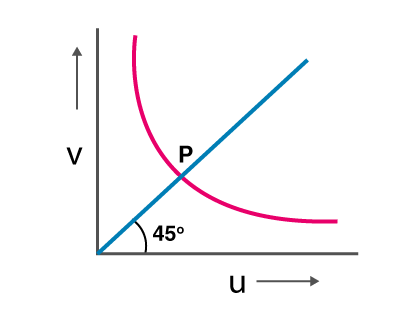NEET Physics is the scoring paper in the medical entrance examination. Here, you will discover the NEET Physics MCQ Questions for all Concepts as per the latest syllabus. Practice more on a regular basis with these NEET Physics objective questions on air pollution and improve your subject knowledge & problem-solving skills along with time management. NEET Physics Optics Multiple Choice Questions make you feel confident in answering the question in the exam & increases your scores to high.
MCQ on Optics
1. Calculate the velocity of the light ray in the medium, if the critical angle for TIR from medium to the vacuum is 30°.
(a) 2 x 108 m/s
(b) 1.5 x 108 m/s
(c) 0.75 x 108 m/s
(d) 3 x 108 m/s
Answer
Answer: (b) 1.5 x 108 m/s
2. Which of the following is the combination that is used in the formation of achromatic lenses?
(a) 1 convex and 1 plane mirror
(b) 2 convex lenses
(c) 1 convex and 1 concave lens
(d) 2 concave lenses
Answer
Answer: (c) 1 convex and 1 concave lens
3. How does magnifying power change for an objective lens if the focal length of the objective lens is increased?
(a) The microscope will decrease but for the telescope, it will increase
(b) The microscope will increase but for the telescope, it decreases
(c) The microscope and telescope will increase
(d) The microscope and telescope will decrease
Answer
Answer: (a) The microscope will decrease but for the telescope, it will increase
4. What is the power of the combination of lenses, if two thin lenses of focal length f1 and f2 are in contact and coaxial.

Answer
Answer: (d) \(\frac{f_{1}+f_{2}}{f_{1} f_{2}}\)
5. Following is the graph explaining the variation of v with respect to u for a mirror. What is the value of points above the marking P on the curve for values of v

(a) Smaller than f
(b) Larger than 2f
(c) Smaller than 2f
(d) Smaller than 2
Answer
Answer: (b) Larger than 2f
6. What is the magnification produced by the plane mirror?
(a) Zero
(b) +1
(c) -1
(d) Between 0 and +∞
Answer
Answer: (b) +1
7. The image formed by the convex mirror is \(\frac{1}{n}\) times the object and has a focal length f. What is the distance of object from the mirror?

Answer
Answer: (b) (n – 1)f
8. Which of the following graph is correct when the real image distance v formed by a convex lens is measured for different object distance u.

Answer
Answer: (d)
9. What happens to the refractive index on heating the liquid?
(a) Increases
(b) Decreases
(c) Remains unchanged
(d) Increases or decreases depending on the rate of heating
Answer
Answer: (b) Decreases
10. Calculate the speed of light in water if the refractive index of water is 1.33
(a) 4 x 108 m/s
(b) 2.25 x 108 m/s
(c) 1.33 x 108 m/s
(d) 3 x 108 m/s
Answer
Answer: (b) 2.25 x 108 m/s
11. What is hypermetropia?
(a) Bad vision due to age
(b) Short-sightedness
(c) Long-sightedness
(d) Formation of a layer on the eye
Answer
Answer: (c) Long-sightedness
12. Rainbow is an example of which phenomenon?
(a) Refraction and scattering
(b) Refraction and total internal reflection
(c) Dispersion and reflection
(d) Dispersion and total internal reflection
Answer
Answer: (d) Dispersion and total internal reflection
